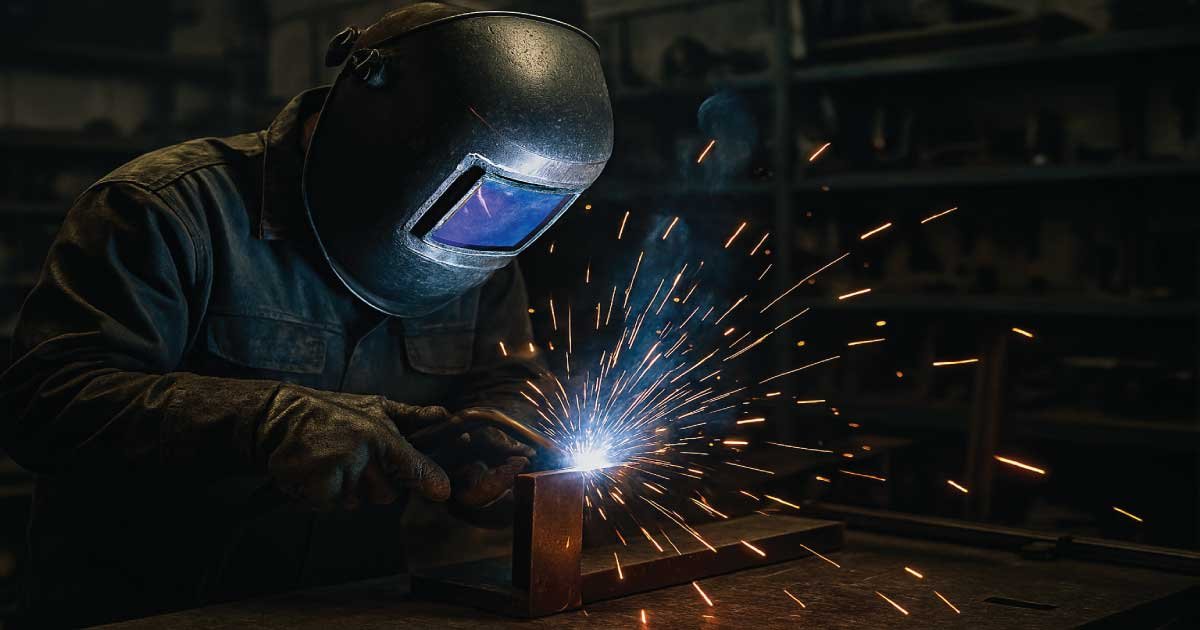Welding is one of the most important processes in mechanical engineering, construction, and manufacturing. Whether you’re building a car, a bridge, or even a small DIY project, welding ensures that metal parts are joined securely and efficiently. In this guide, we will explore the meaning and definition of welding, its basic types, essential techniques, safety precautions, and practical uses. By the end, even beginners will have a clear understanding of what welding is and how it works.
What is Welding?
Welding is a fabrication process that joins two or more metal pieces by melting their surfaces and allowing them to fuse together as they cool. Unlike mechanical fastening, such as using bolts or screws, welding creates a permanent bond between metals. The process often involves adding a filler material to strengthen the joint.
In simpler terms, welding is like “gluing” metal parts together, but instead of using glue, extreme heat and sometimes pressure are used. The resulting joint is strong, durable, and often as strong as—or even stronger than—the original metals themselves.
Definition of Welding
The American Welding Society defines welding as:
“A process of joining materials, usually metals or thermoplastics, by causing coalescence. This is often done by melting the workpieces and adding a filler material to form a pool of molten material that cools to become a strong joint.”
In short, welding is the controlled application of heat, pressure, or both to fuse materials together.
Also Read:
Types of Welding
Welding is not a one-size-fits-all process. There are several types, each with unique techniques and equipment. Understanding the common types is crucial for beginners and professionals alike.
1. Arc Welding
Arc welding is one of the most widely used methods. It involves creating an electric arc between an electrode and the metal workpiece. The heat from the arc melts the metals and the electrode, forming a strong joint.
Popular arc welding methods include:
Shielded Metal Arc Welding (SMAW)
Gas Metal Arc Welding (GMAW/MIG)
Gas Tungsten Arc Welding (GTAW/TIG)
Arc welding is versatile and works well with various metals, including steel, stainless steel, and aluminum.
2. Gas Welding
Gas welding, often called oxy-acetylene welding, uses a flame produced by burning a mixture of oxygen and acetylene gas. The heat melts the metal edges, allowing them to fuse. It is one of the oldest welding techniques and is still used for repair work, artistic metalwork, and thin materials.
3. Resistance Welding
In resistance welding, the metals are joined by applying heat generated from electrical resistance while pressing the workpieces together. Spot welding is a common example, widely used in automobile manufacturing for joining sheet metal.
4. Laser Welding
Laser welding is a modern, high-precision method that uses a concentrated laser beam to melt metals. It is commonly used in electronics, aerospace, and medical industries where accuracy is critical.
5. Friction Welding
Friction welding relies on mechanical friction to generate heat and join metals without melting them. It is often used for cylindrical components, like pipes and shafts.
Also Read:
Essential Welding Techniques for Beginners
For beginners, learning a few fundamental techniques is essential before attempting complex projects.
1. Clean the Metal Surface
Cleanliness is critical in welding. Rust, oil, paint, and dirt can weaken the weld and create defects. Always clean the metal surfaces before welding.
2. Correct Electrode or Filler Material
Choosing the right electrode or filler material depends on the metal type and welding process. For example, MIG welding uses wire feed, while TIG welding uses rods. Matching the filler material to the base metal ensures a strong, durable joint.
3. Maintain Proper Angle and Speed
The welding torch or electrode must be held at the correct angle, usually between 15–20 degrees, and moved steadily. Too fast can result in weak joints; too slow can cause excessive buildup or burn-through.
4. Practice Safety
Welding can be dangerous. Always wear protective gear, including a welding helmet with a proper shade, gloves, flame-resistant clothing, and safety boots. Work in a well-ventilated area to avoid inhaling harmful fumes.
Also Read:
Applications of Welding
Welding is everywhere in daily life and industry. Here are some common applications:
Construction: Welding is used to assemble steel structures, bridges, pipelines, and buildings.
Automobile Industry: Cars, trucks, and motorcycles rely on welding for chassis, exhaust systems, and body panels.
Shipbuilding: Ships and submarines require heavy-duty welding to ensure structural integrity.
Aerospace: Aircraft and spacecraft use specialized welding techniques for high-strength joints.
Art and Craft: Sculptors and metal artists often use welding to create decorative and functional pieces.
Advantages of Welding
Welding offers several benefits over other joining methods:
Strength: Welded joints are strong and can handle high stress.
Durability: Proper welding ensures long-lasting connections.
Flexibility: Various welding techniques allow joining different types and thicknesses of metals.
Efficiency: Welding can be faster than mechanical fastening for large structures.
Aesthetics: Welding can create clean, smooth joints that are visually appealing.
Common Welding Challenges
Despite its benefits, welding has some challenges, especially for beginners:
Heat Control: Excess heat can warp thin metals.
Weld Defects: Improper technique can cause porosity, cracks, or weak joints.
Fume and Gas Exposure: Some welding processes produce harmful fumes if proper ventilation isn’t used.
Equipment Costs: High-quality welding machines can be expensive for beginners.
Final Thoughts
Welding is a fundamental skill in mechanical engineering and metalworking, offering strong, durable, and versatile joints. For beginners, understanding its meaning, definition, types, and basic techniques is the first step toward mastering this craft. Whether your goal is professional engineering work or DIY projects, welding opens the door to creating and repairing metal structures with confidence.
With proper training, practice, and safety precautions, anyone can become proficient in welding. Start small, experiment with different techniques, and gradually take on more complex projects. Remember, welding is not just about joining metals—it’s about precision, creativity, and building structures that last.
Also Read:

